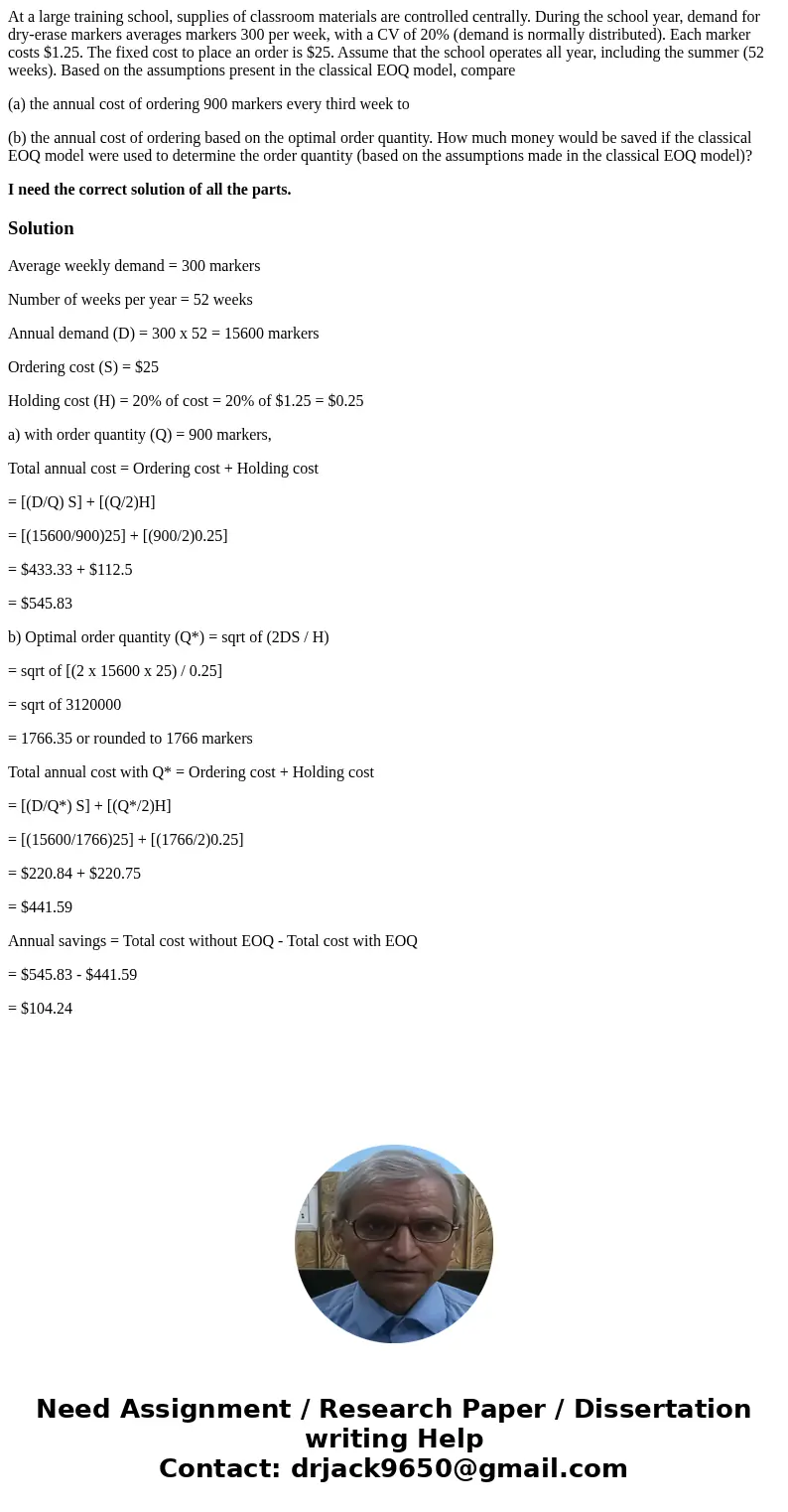At a large training school supplies of classroom materials a
At a large training school, supplies of classroom materials are controlled centrally. During the school year, demand for dry-erase markers averages markers 300 per week, with a CV of 20% (demand is normally distributed). Each marker costs $1.25. The fixed cost to place an order is $25. Assume that the school operates all year, including the summer (52 weeks). Based on the assumptions present in the classical EOQ model, compare
(a) the annual cost of ordering 900 markers every third week to
(b) the annual cost of ordering based on the optimal order quantity. How much money would be saved if the classical EOQ model were used to determine the order quantity (based on the assumptions made in the classical EOQ model)?
I need the correct solution of all the parts.
Solution
Average weekly demand = 300 markers
Number of weeks per year = 52 weeks
Annual demand (D) = 300 x 52 = 15600 markers
Ordering cost (S) = $25
Holding cost (H) = 20% of cost = 20% of $1.25 = $0.25
a) with order quantity (Q) = 900 markers,
Total annual cost = Ordering cost + Holding cost
= [(D/Q) S] + [(Q/2)H]
= [(15600/900)25] + [(900/2)0.25]
= $433.33 + $112.5
= $545.83
b) Optimal order quantity (Q*) = sqrt of (2DS / H)
= sqrt of [(2 x 15600 x 25) / 0.25]
= sqrt of 3120000
= 1766.35 or rounded to 1766 markers
Total annual cost with Q* = Ordering cost + Holding cost
= [(D/Q*) S] + [(Q*/2)H]
= [(15600/1766)25] + [(1766/2)0.25]
= $220.84 + $220.75
= $441.59
Annual savings = Total cost without EOQ - Total cost with EOQ
= $545.83 - $441.59
= $104.24

 Homework Sourse
Homework Sourse